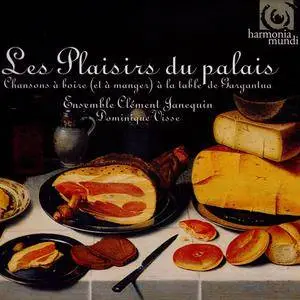Pierre de la Rue
Orlando Consort - Pierre de la Rue (2024) [Official Digital Download] Vinyl & HR
Posted by delpotro at July 3, 2024
Orlando Consort - Pierre de la Rue (2024)
FLAC (tracks) 24-bit/44,1 kHz | Front Cover | Time - 63:13 minutes | 561 MB
Classical, Sacred, Choral | Label: Fra Bernardo, Official Digital Download
FLAC (tracks) 24-bit/44,1 kHz | Front Cover | Time - 63:13 minutes | 561 MB
Classical, Sacred, Choral | Label: Fra Bernardo, Official Digital Download
Pierre de la Rue was a Franco-Flemish composer and singer of the Renaissance. His name also appears as Piersson or variants of Pierchon and his toponymic, when present, as various forms of de Platea, de Robore, or de Vico. A member of the same generation as Josquin des Prez, and a long associate of the Habsburg-Burgundian musical chapel, he ranks with Agricola, Brumel, Compère, Isaac, Obrecht, and Weerbeke as one of the most famous and influential composers in the Netherlands polyphonic style in the decades around 1500.
Orlando Consort - Pierre de la Rue (2024) Music
Posted by ciklon5 at July 3, 2024
Orlando Consort - Pierre de la Rue (2024)
FLAC (tracks), Lossless / MP3 320 kbps | 1:03:12 | 251 / 145 Mb
Genre: Classical
FLAC (tracks), Lossless / MP3 320 kbps | 1:03:12 | 251 / 145 Mb
Genre: Classical
The Orlando Consort, a male vocal quartet, has a range of repertory that is unusually wide among early music groups, running from Guillaume de Machaut through contemporary concert music and jazz. The group is prolific in its recordings, having released one or more albums every year since the early '90s except during the pandemic year of 2020. The Orlando Consort was formed in 1988 as a one-off touring group assembled by Britain's Early Music Network (now the National Centre for Early Music). The group came on the scene amid a general trend toward smaller ensembles in the performance of Renaissance polyphony, and it was immediately successful and decided to remain intact for further performances. The group's original members were Robert Harre-Jones (counter-tenor), Charles Daniels (tenor), Angus Smith (tenor), and Donald Greig (baritone). As of 2023, Smith and Greig remain, while counter-tenor Matthew Venner and tenor Mark Dobell have replaced Harre-Jones and Daniels.
Paul Van Nevel, Huelgas Ensemble - The Magic of Polyphony (2020) Music
Posted by ArlegZ at Jan. 18, 2022
Paul Van Nevel, Huelgas Ensemble - The Magic of Polyphony (2020)
EAC | FLAC | Image (Cue & Log) ~ 634 Mb | Total time: 02:38:38 | Scans included
Classical | Label: Deutsche Harmonia Mundi | # 19075970012 | Recorded: 2019
EAC | FLAC | Image (Cue & Log) ~ 634 Mb | Total time: 02:38:38 | Scans included
Classical | Label: Deutsche Harmonia Mundi | # 19075970012 | Recorded: 2019
The general trend in recordings of Renaissance polyphony has been toward typing music to specific surroundings: royal festivities, religious feast days, and the like. This collection by the Huelgas Ensemble goes in the other direction, providing three CDs' worth of music ranging from the medieval era to Anton Bruckner, with most of the pieces falling into some stretch of the High Renaissance. The music was recorded, beautifully, in a Romanesque church near Dijon in 2018, and the program is unified loosely by a set of general guidelines for the selections at that event: the music emphasized "unknown repertoire, undeservedly obscure composers, and experiments that fall outside the scope of the normal concert season."
Capella de la Torre & Katharina Bauml - Ein musikalisches Gipfeltreffen (2017) Music
Posted by delpotro at Sept. 8, 2020
Capella de la Torre & Katharina Bauml - Ein musikalisches Gipfeltreffen (2017)
WEB FLAC (tracks) - 316 Mb | MP3 CBR 320 kbps - 162 Mb | 01:10:34
Classical, Sacred, Choral | Label: Musik Museum
WEB FLAC (tracks) - 316 Mb | MP3 CBR 320 kbps - 162 Mb | 01:10:34
Classical, Sacred, Choral | Label: Musik Museum
Capella de la Torre is a German early music ensemble led by Katharina Bäuml, founded in 2005. In 2016 Katharina Bäuml and Capella de la Torre won the ECHO Klassik Ensemble des Jahres for their CD Water Music. In 2017 Capella de la Torre was awarded again with ECHO Klassik for the CD "Da Pacem" with Rias Kamerchor conducted by Florian Helgath. The ensemble is a wind ensemble, but has enlarged to include singers, lute, organ and percussion.
New York Polyphony - And the sun darkened: music for Passiontide (2021) Music
Posted by ArlegZ at Feb. 20, 2022
New York Polyphony - And the sun darkened: music for Passiontide (2021)
EAC | FLAC | Image (Cue & Log) ~ 266 Mb | Total time: 58:26 | Scans included
Classical | Label: BIS | # BIS-SACD-2277 | Recorded: 2018
EAC | FLAC | Image (Cue & Log) ~ 266 Mb | Total time: 58:26 | Scans included
Classical | Label: BIS | # BIS-SACD-2277 | Recorded: 2018
Resonating across more than five centuries, expressions of personal piety and prayer fill these works by a quartet of Franco-Flemish composers, all born in the 15th century, and their modern-day colleagues, Estonian Cyrillus Kreek (1889-1962) and British-Norwegian Andrew Smith (b. 1970).
Stile Antico - From the Imperial Court: Music for the House of Hapsburg (2014) Music
Posted by ArlegZ at March 18, 2023
Stile Antico - From the Imperial Court: Music for the House of Hapsburg (2014)
EAC | FLAC | Image (Cue & Log) ~ 302 Mb | Total time: 71:07 | Scans included
Classical | Label: Harmonia Mundi | # HMU 807595 | Recorded: 2013
EAC | FLAC | Image (Cue & Log) ~ 302 Mb | Total time: 71:07 | Scans included
Classical | Label: Harmonia Mundi | # HMU 807595 | Recorded: 2013
The 16 voices of the British choir Stile Antico have a reputation for perfect blend and for programs that go beyond the favorites generally essayed by the similarly sized British choir the Sixteen. That's what's in this collection of motets (and the chanson Mille regretz) united by their connection to the Hapsburg court. It may be surprising to see Thomas Tallis under that rubric, but as the informative booklet points out, he makes the cut due to the marriage of Philip II of Spain to Mary Tudor. As that suggests, and as might be expected from a collection of pieces spanning a century, the Hapsburg factor does little to unite these pieces, even if the Emperor Maximilian does get name-checked at one point. Instead, this is simply a collection of intriguing Renaissance works that are generally beyond the ones normally heard.
Konrad Ruhland - De la Rue- Requiem - Elegies and Occasional Motets (1965/2021) [Official Digital Download 24/192] Vinyl & HR
Posted by pyatak at Aug. 24, 2021
Konrad Ruhland - De la Rue- Requiem - Elegies and Occasional Motets (1965/2021) [Official Digital Download 24/192]
FLAC (tracks) 24-bit/192 kHz | Front Cover | Time - 41:17 minutes | 1,54 GB
Classical | Label: Warner Classics, Official Digital Download
FLAC (tracks) 24-bit/192 kHz | Front Cover | Time - 41:17 minutes | 1,54 GB
Classical | Label: Warner Classics, Official Digital Download
Pierre de la Rue was a contemporary of Josquin, and spent most of his career in the service of the Dukes of Burgundy. Here is the earliest recording of his Requiem, the third known musical setting of the mass for the dead in music history after those by Dufay (lost) and Ockeghem.
Pierre Gripari, "La sorcière de la rue Mouffetard et autres contes de la rue Broca" eBooks & eLearning
Posted by TimMa at Sept. 16, 2018
Pierre Gripari, "La sorcière de la rue Mouffetard et autres contes de la rue Broca"
Gallimard | 2017 | ISBN: 207509103X | French | MP3@128 kbps | 1 hrs 05 mins | 88.8 MB
Gallimard | 2017 | ISBN: 207509103X | French | MP3@128 kbps | 1 hrs 05 mins | 88.8 MB
Il était une fois la ville de Paris. Il était une fois une rue Broca. Il était une fois un café kabyle. Il était une fois un Monsieur Pierre. Il était une fois un petit garçon qui s’appelait Bachir. Il était une fois une petite fille. Et c’est ainsi qu’en écoutant ces histoires, vous allez faire la connaissance d’une sorcière, d’un géant, d’une paire de chaussures, de Scoubidou, la poupée voyageuse, d’une fée, et que vous saurez enfin la véritable histoire de Lustucru et de la mère Michel. …
Pierre Gripari, "Les contes de la rue Broca" eBooks & eLearning
Posted by TimMa at April 30, 2017
Pierre Gripari, "Les contes de la rue Broca"
2070649121 | 2012 | ISBN: 2070649121 | French | MP3 128 Kbps | Lenght: 03:57:09 | 212.3 MB
2070649121 | 2012 | ISBN: 2070649121 | French | MP3 128 Kbps | Lenght: 03:57:09 | 212.3 MB
Un jour, Monsieur Pierre trouve cinq francs dans sa poche. Aussitôt, il décide d'acheter une maison. À ce tarif-là, elles sont plutôt rares…
Il en trouve pourtant une, mais son prix modique cache quelque chose : une sorcière habite le placard à balais. Et si l'on chante certaine petite chanson, elle sort…
Ensemble Clément Janequin, Dominique Visse - Les Plaisirs du palais: Chansons À Boire De La Renaissance (2007) 2CD Music
Posted by SuniR at June 19, 2017
Ensemble Clément Janequin, Dominique Visse - Les Plaisirs du palais: Chansons À Boire De La Renaissance (2007) 2CD
XLD | FLAC (log,tracks+cue) -> 597 Mb (5% Rec.) | Scans -> 68 Mb
Classical, Vocal | Label: Harmonia Mundi, HMC 5908224.25 | 01:59:50
XLD | FLAC (log,tracks+cue) -> 597 Mb (5% Rec.) | Scans -> 68 Mb
Classical, Vocal | Label: Harmonia Mundi, HMC 5908224.25 | 01:59:50
As its title suggests, this CD-book has something to delight every palate. It brings together some of the most truculent drinking songs ever to grace a Renaissance monarch’s table. A sumptuous buffet of Rabelaisian verse, seasoned with a wide variety of sauces prepared by the finest chefs of French polyphony – Claudin de Sermisy, Fréneau (a Fricassée!), Compère, Certon, Clemens non Papa and many others – and garnished with a delicious side-order of paintings and recipes by the great masters!
![Orlando Consort - Pierre de la Rue (2024) [Official Digital Download]](https://pixhost.icu/avaxhome/9f/9fac/9faca1f567aa42708b1e8d3336e3b72c-12449699543228435326_medium.webp)
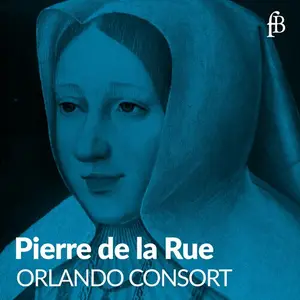
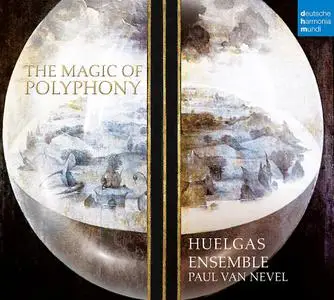
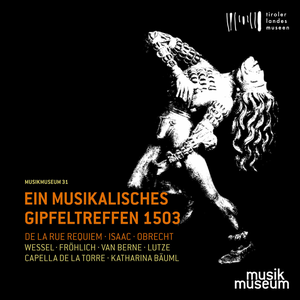
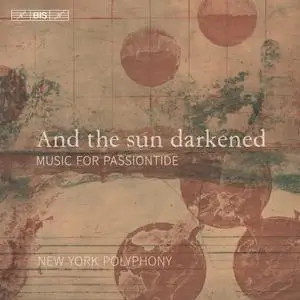
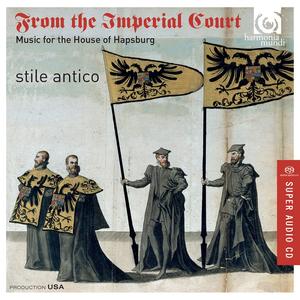
![Konrad Ruhland - De la Rue- Requiem - Elegies and Occasional Motets (1965/2021) [Official Digital Download 24/192]](https://pixhost.icu/avaxhome/2e/0a/00870a2e_medium.jpg)


